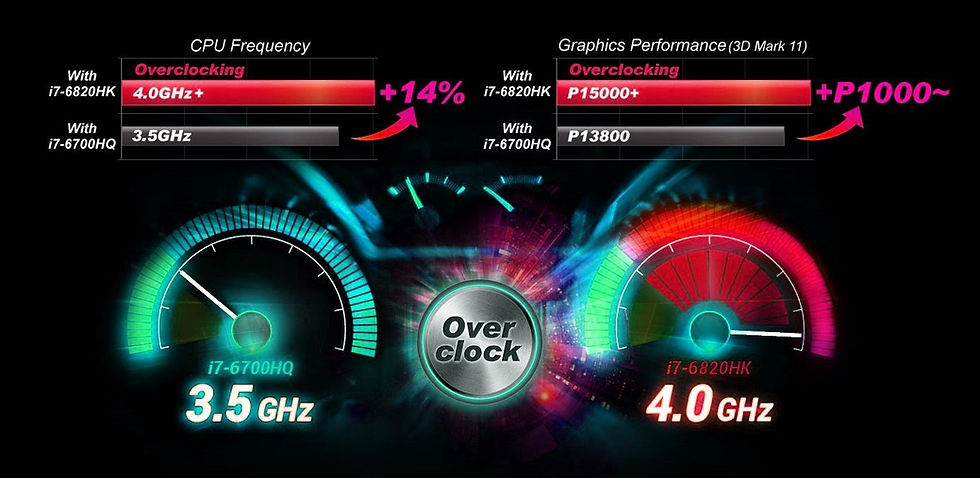6 Ideas to Free Up Storage on Your MacBook
- Nick
- Jun 2, 2022
- 4 min read
Updated: Aug 23, 2022

Storage on a MacBook is one of those topics that more and more Mac owners are trying to research. It is quite easy to run out of free disk space if you make certain mistakes on a regular basis.
The fact that MacBooks do not have the most storage available does not help either. And since the recommended amount of free space on a computer's drive is at least 20 percent of total disk space, it is expected that less than that causes performance issues.
For example, you will notice an overall sluggish feeling when using the computer. Individual applications might take longer to load. There might also be cases of various errors, such as Kernel Task as described on this page.
So, the question is this: how can you counter potential MacBook storage issues? This article will give you some valuable solutions.
Remove Unnecessary System Junk
Let's start with temporary system junk and other files that are part of macOS you do not really need. Integrated applications and tools are part of the utility set, and you cannot remove them, nor should you.
However, in the case of app extensions, plugins, and cache, for example, it is good to have a habit of getting rid of them on a regular basis. And for that, you want a cleanup utility tool to automate the process.
In a similar vein, you will also need to take care of some other aspects that require a one-time task. For instance, Anaconda, a tool for coding on macOS, is pretty much obsolete if you are not coding, and it makes sense to get rid of it permanently.
The goal is to leave the computer with as little clutter as possible so that you have fewer storage and performance problems to worry about.
Scan the System for Malware
Cybersecurity threats are not as common on macOS as they are on MS Windows, but it does not mean that you can ignore the potential issue.
Some computer viruses affect the storage by corrupting data or slowly expanding themselves and consuming storage.
Unless you have reliable antivirus software, you should not expect to detect and eliminate these threats yourself. In addition to custom disk scans, you should also make sure that antivirus software is running in the background all the time.
Other methods to minimize the risks of cybersecurity threats is to run the late macOS version, ignore shady messages and ads online, and use a virtual private network while surfing the web.
Avoid Large Media Files
Large media files are another item on the list. These days, it makes little sense to hoard movies, TV shows, and music on your computer. Instead, you should make the most out of the streaming networks.
Netflix, Hulu, HBO, and Disney+ are a few examples of streaming platforms that offer you hours of entertainment in the form of movies and TV shows.
If you are looking to stream music, Spotify is the go-to option, and it even has a free plan, though that one also includes ads. As an alternative, you can listen to music on YouTube.
The bottom line is that large media files that you want to keep on the MacBook are usually available on the go with the help of streaming platforms.
Take Advantage of iCloud
Sometimes, the best solution to the storage problem is not trying to find files that you can remove permanently. No, what you can also do is take advantage of external storage.
As a MacBook user, you have the option to utilize iCloud, a cloud service that offers you 5GB of space for free. Of course, this amount might not be enough, which means that you need to get a better plan by paying a monthly fee in exchange for additional storage. You can get as much as 2TB of iCloud storage for 10 dollars per month.
Not only can you transfer and keep files on iCloud, but the service also lets you access the account from other Apple devices with the same Apple ID, and that creates a mini ecosystem between your Apple devices.
Transfer Data to an External HDD
Similar to iCloud, you can also try to use an external HDD for storage needs. It might not seem like an optimal solution because getting another physical accessory for your computer is not necessarily something you want.
On the other hand, an external HDD is relatively cheap, nor does it require that much physical space. Getting one is also worthwhile if you want to back up data using Time Machine—a built-in macOS tool to back up data.
Reinstall the OS
The last thing on the list is pretty straightforward. If you struggle to find a solution despite trying different methods mentioned in this article, then you still have the option to reinstall the operating system.
Giving the device a clean slate is one of the most efficient methods to eliminate the clutter that accumulated over time. Keep in mind, though, that you should back up data you do not want to lose.




Comments